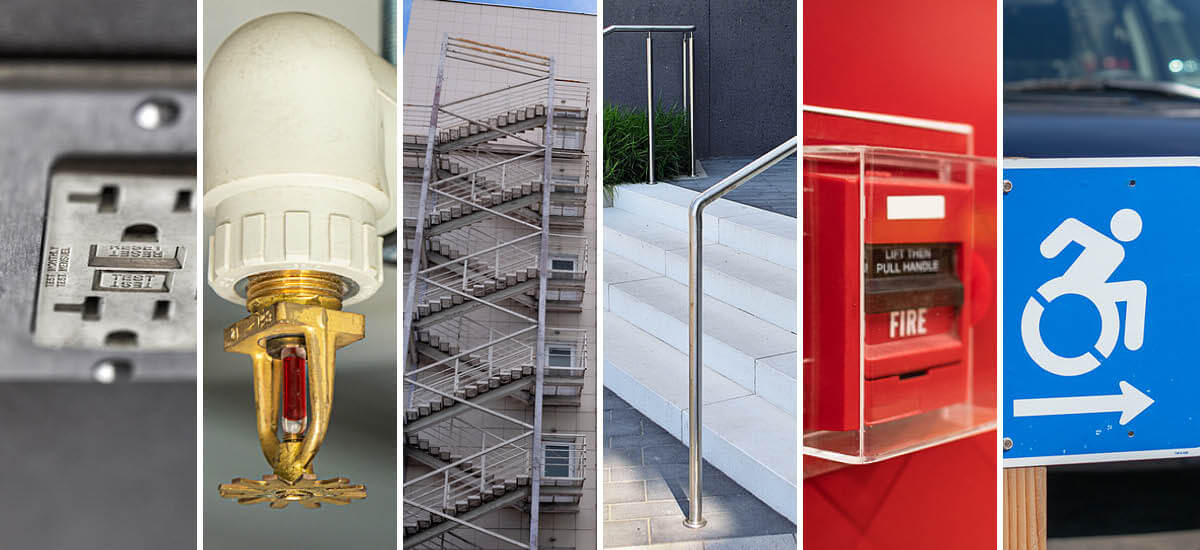
Whether you are a homeowner or property manager, there are a lot of questions to consider after suffering a property loss. Many will wonder what caused the damage, how could it have been prevented, and how do I rebuild safer, stronger, and energy efficient?
To answer this question, it means thoroughly reviewing and understanding your insurance policy, which is a time-consuming process, especially if you are not an insurance professional who handles property damage claims for a living.
After experiencing a claim, you may hear terms such as RCV (Replacement Cost Value), ACV (Actual Cash Value), Depreciation, Inflation Guard, Coinsurance, and Ordinance or Law Coverage, but which term provides coverage for rebuilding your residential or commercial property to code?
For those who don’t know the term “Ordinance or Law”, it refers to insurance coverage where the insurance company will pay the necessary cost for you to comply with any law or ordinance requiring or regulating the construction, demolition, remodeling, renovation or repair of your damaged and undamaged structure by a peril (fire, water damage, collapse) insured against. This extra payment is typically not paid until you repair or rebuild your dwelling, other structure, or improvements, and betterment.
Considering many homes, apartment buildings and commercial properties are older, the enforcement of current building codes or ordinances can be costly. Prior to suffering a fire, flood, or storm damage claim, it’s important to call your insurance agent to request this additional coverage. For homeowners, you can usually find this coverage under the “Additional Coverages” section of your policy. For commercial policies, ordinance, or law, coverage is usually broken out into (3) parts with varying limits for Undamaged Portion of Building, Demolition Cost, and Increased Cost of Construction.
From experience, our team at United Public Adjusters & Appraisers, Inc. has seen homeowner policies that have 10% of the limit of liability that applies to Coverage A (Dwelling) or Building Additions and Alterations. For high value insurance policies, which comes with increased premiums, we have seen unlimited coverage for rebuilding to code. As you can dig deeper into commercial policies for larger buildings, the ordinance or law coverage can be in the millions depending on the size, type of use, age of building and who the insurance company is. Depending on the State and Local codes, property owners should consider obtaining 50% for Ordinance or Law Coverage as building codes are getting tougher throughout the U.S., especially in States like New York, Florida, and California.
Typical examples of code requirements that our clients were forced to implement after a major fire or water damage include:
- Replacement of Stair Handrails due to increased height requirements.
- For residential boilers which are located inside apartments or basements that didn’t have fire separation or protection, they were required to have 2 hour fire rating enclosures with fresh air intake for each boiler enclosure.
- Flexible gas lines had to be replaced with Black Iron pipe, plus all piping to be identified by a yellow label marked ‘Gas’ in black letters.
- Installation of GFI outlets or extra outlets due to limited power or safety measures for each room.
- Hard-wired smoke detectors if none existed.
- New Plumbing venting or replacement of piping due to type/size of existing piping to the bathrooms and kitchens. This may include installation of exhaust fans if they didn’t exist, which are now required.
- Wall/ceiling Insulation to be installed where none existed due to having plaster or increase the R Value to comply with today’s code.
- Larger Floor Joists to meet current codes.
- Self-closing fire-rated steel doors to prevent fire from entering the common hallways.
- Fire Stopping to be installed at fire-rated walls, partitions, floors or ceilings penetrations for electrical wiring, plumbing or other conduits to limit the spread of fire or smoke.
- Adding a second point of egress from basement.
- Fire egress windows.
- Sprinkler systems
- ADA compliant ramps, elevators, signage, bathrooms and more.
- Comply with the current floodplain management regulations, which require the first floor to be raised due to the structure damages exceeding 50% of the pre-damaged structure value.
As you can see by the above, handling a fire damage claim or water damage claim is a full-time job that requires an insurance professional who understands construction, insurance policy interpretation, and knows how to present a building damage and ordinance or law claim to your insurance company. When you have a licensed public adjuster managing your claim, it only levels the playing field and streamlines the insurance claims process. Before meeting the insurance company on your own, please reach out to our team, as education is key when navigating a complex property damage claim. We are here to help and can be reached at 1-800-718-5677 (LOSS).
MY FREE CONSULTATION
"*" indicates required fields
